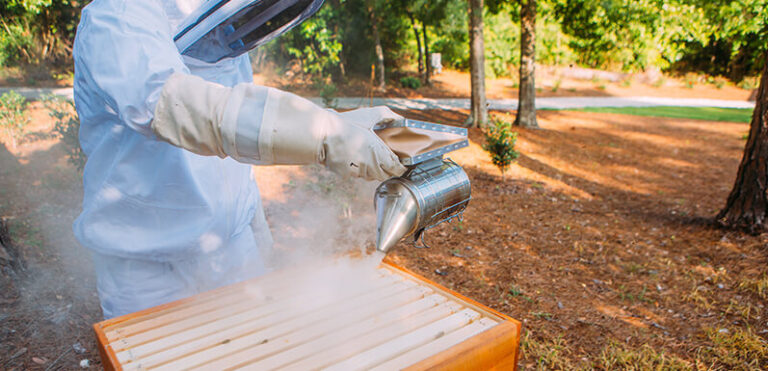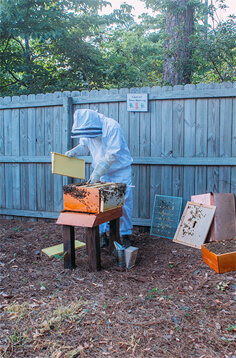Location, Location, Location! Where you ultimately decide to place your hives can have a huge effect on the success you have raising healthy bees. Hive management is not possible if you don’t have egg-laying queens producing brood, so take every phase of the process as deliberately and intentionally as you can. One poor decision can wipe out even a strong colony. When placing your hives, take the time to consider these four factors.
 Accessibility
Accessibility
Place your hives in a place that is convenient and easily accessible for you. While it may be good to keep your bees in a remote area, make sure you can easily get to your hives with all your protective clothing and bee tools. Another thing to consider is honey extraction season. Deep supers full of honey can weigh as much as 90 pounds, so walking a long distance can be quite cumbersome.
Sunshine
Ensure your hives get plenty of early morning sunlight. Hives placed in full sun tend to have fewer problems with diseases and pests and usually produce strong honey stores. Sunshine energizes your bees and tells the field bees that it’s time to start working and collect nectar, pollen, water and propolis. We recommend the entrance face east/southeast. Some afternoon shade is okay. Remember bees like to keep their hives at 92 degrees.
Wind
Strong winds can be highly damaging to hives, with wind chills disrupting, and possibly wiping out, colonies of bees. You can use natural windbreaks, like trees, shrubs and hillsides, or place your hive near a structure, such as a building or fence. When placing your hives near wind-barriers, it is best if it the windbreaks are at least one foot taller than the hives and about 4-6 feet behind the hives. If too close, the barriers could end up directing the wind up through the screened bottom board.
Traffic
Safety first—both for you and your bees. Place your hives where there is no traffic, human or otherwise. If you’re an urban beekeeper, you may want to place your hive in a fenced-in area. Dick, our founder, places his hives parallel to a fence so as not to inhibit the bees’ flight path, which also runs parallel to the fence.
We’ve all heard the saying, “Home is where the heart is,” but if you continue with good hive management practices, your bees will be saying, “Home is where the honey is.” And that’s some sweet-talking every beekeeper loves to hear.


 Accessibility
Accessibility